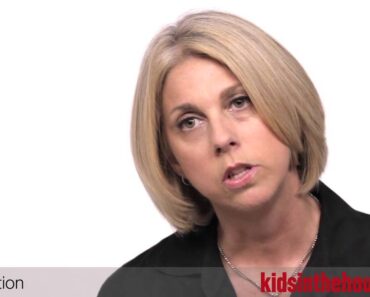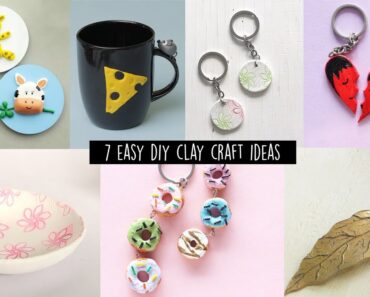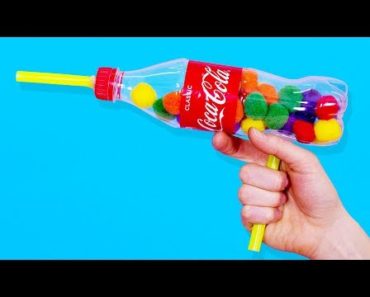Waste management is a colossal problem the world is facing today. Each year, about two billion tonnes of municipal solid waste is generated globally (1). The amount of waste generated can fill up 800,0000 Olympic-sized swimming pools (2). To prevent our Earth from turning into a sea of garbage, we have to do our bit by creating awareness among the children for a better morrow.
The first step is to make children understand the three Rs – Reduce, Reuse, and Recycle — for effective waste management. Change begins at home, and waste management at home can be your first step towards making our planet a cleaner and safer place. Each day, every home generates organic and inorganic waste, including leftover food, tissue papers, toys, wrappers, receipts, and plastic containers. Proper waste management at home can help reduce the global waste load. Let us understand in detail about Reduce, Reuse, and Recycle.
What Do The Terms ‘Reduce, Reuse, and Recycle’ Mean?
Reduce means to decrease the garbage we create by limiting your purchases and consumption. This is a simple and best way is to reduce waste and thereby eliminate the cause itself. Teaching your little ones the importance of avoiding wastage is the first step in making them understand the concept of “reduce”.
Change at home can begin by following simple steps. Switch off the electric and electronic devices when not in use, take only the amount of water you want to drink, and close the taps while applying soap or brushing. Further, start encouraging your children to use non-polluting, durable, and recyclable materials.
Reuse means using the same item more than once rather than discarding it. There are several ingenious ways to reuse and repurpose used items. For instance, you can reuse broken dishes, plastic containers, or empty glass bottles as flower pots or vases. You can reuse takeaway paper coffee cups as pen or pencil holders. Apart from saving the environment, reusing and repurposing used items in creative ways can be a fun activity for children.
Recycle is a method of creating new items from used materials or old products. Sometimes products like opened soda cans, soft drink bottles, broken parts of bicycles, etc., cannot be reused. These materials can then be recycled and sold again.
Inculcating the values of these 3Rs in your children is not a one-time activity. You need to consistently reinforce waste management values. Getting these in your daily regime and regularly celebrating international environment days like World Earth Day and World Environment Day are some ways of reaffirming the message.
Benefits Of 3Rs For Kids
- Sensitizes them towards environmental issues: Educating the future generation about the need to safeguard and preserve the environment is paramount. Children are naturally empathetic. Teaching them to follow the three Rs in managing waste early on will make them conscious citizens and go a long way in keeping the environment clean and the planet a safe place to live.
- Teaches discipline: Understanding and following the concepts of Reduce, Reuse, and Recycle will make the children more disciplined. The concept of “reduce” will teach them the importance of saving. Children will realize that they should not discard food or toys, or wastewater. They will know the difference between need and want.
- Makes them responsible: Following the principles of 3Rs in the house involves performing numerous tasks. Parents can lead by example and demonstrate the process of reusing or recycling used items or materials to their children. They can assign simple tasks to their little ones. This way, children will gradually learn the tasks, which will increase their sense of independence and boost their confidence.
- Inculcates values: The concept of 3Rs encourages the donation of clothes and toys to shelter homes. This will teach children the value of giving back to society. Passing on the clothes to the siblings will educate them about sharing.
- Develops creativity: Parents can make the process of repurposing waste a fun activity and exciting for children by suggesting creative DIY projects. You can try activities like painting the glass bottles to turn them into colorful flower vases, using tin cans to make wind chimes, and turning old socks and clothes into soft toys.
Teaching Children How To Reduce
Some simple steps will help your little ones understand and incorporate the concept of reduce in their lives.
- Show them how to serve food without spilling.
- Teach them the value of food.
- Teach your children how to store leftover food items in the refrigerator.
- Show them how to use notebooks and drawing books effectively by using both sides of the paper.
- Teach your children about the hazard of using plastic. Encourage them to avoid using plastic bags.
- Educate them about carrying reusable bags while grocery shopping.
- Teach them the importance of purchasing products that are durable to avoid buying often.
- Educate your children about bulk buying to reduce the amount of packaging waste. Products like biscuits, chips, breakfast cereals, and toffees can be brought in bulk.
- Encourage them to carry tap water in reusable water bottles instead of buying bottled water. Do not buy drinks sold in plastic containers.
- Teach them to carry school lunches from home in reusable lunch boxes instead of plastic bags. Discourage them from buying single-serve food items sold in plastic containers or bags.
- Educate your children to avoid drinking from Styrofoam cups as this is a form of plastic.
- Let them carry cloth napkins from home instead of using paper towels or tissue papers.
- Show your children how to grow vegetables and fruits in the backyard to minimize buying them from grocery stores.
- Make them avoid buying products with extra packaging to reduce waste generation.
- Before creating the new school year’s shopping list, encourage your children to check out the previous year’s materials that can be reused.
- Teach your children to avoid disposable cutlery.
Teaching Children How To Reuse
Reusing can be a fun activity through simple and innovative ways to repurpose things.
- Show your children how to mend clothes, shoes, toys, or appliances wherever possible instead of discarding them and purchasing new things. Jeans or trousers that have been torn at the knees can be modified into shorts.
- Introduce them to buying second-hand things from yard sales, thrift shops, or online.
- Let them reuse the gift-wrapping paper for packing gifts for others or craft projects.
- Show them creative and innovative ways to transform empty packing containers, bottles, paper cups, and boxes into craftwork or science work.
- Encourage them to donate old toys and clothes to orphanages or shelter homes.
- Teach them how to use old baby blankets, socks, and colorful clothes to make soft toys, tote bags, or furniture covers.
- Inspire them to transform broken crayon pieces into colorful and pretty candles.
- Show them that reusable plastic containers can be used to keep coins, pebbles, clips, pins, and other household items.
- Teach them to print on both sides of the paper while taking a printout. You can use the blank side for calculations, making lists, scrap paper, or doodling,
- Encourage them to join ‘best from waste’ workshops at school.
- Communicate to your children the importance of conserving water and teach them how the bathwater or water from the washing machine can be used for cleaning floors, flushing toilets, or washing cars.
Teaching Children How To Recycle
About 300 million tonnes of plastic is generated annually (3). However, the world has managed to recycle only 9% of all the plastic waste ever generated (3). While 12% is burned, 79% of the total plastic gets collected in landfills, dump yards, or the natural environment (3).
- Educate your children about the importance of recycling and explain the process to them.
- Teach your children about materials that can and cannot be recycled.
In general, materials which can be recycled are:
- Paper and cardboard such as newspaper, magazines, office paper, cereal boxes, and snack cardboard boxes
- Glass jars, containers, soft drink or beer bottles
- Hard plastic bottles without a lid, found in the kitchen
- Metals like aluminum, tin, and steel cans
Materials which cannot be recycled are:
- Loose plastic bags like shopping bags, plastic wraps, or bubble wrap
- Polystyrene material such as coffee cups, drinking cups, egg cartons, takeout containers
- Soiled food-related items like containers or paper products
- Wax paper, tissue paper, paper towels
- Broken glass, light bulbs, mirror glass
- Ceramic, marble, and crystal
- Maintain separate dustbins for recyclable and non-recyclable items and teach your little ones to dispose of recyclable items into the recycling bin. Appoint them to do the task and encourage them with rewards.
- Check for the recycling programs in your area and encourage your children to participate in them.
- Avoid buying gift wrapping paper as it cannot be recycled due to its shiny coating. Instead, use recyclable gift wrapping paper or colorful boxes for gifting (4).
- Food waste can be recycled by setting up a compost bin in your backyard. Demonstrate the process and the multiple benefits of making your own compost pile.
- Teach your children to identify products that are made from recycled materials while shopping. These products are labeled as ‘Made from recycled material.’
- Inspire them to participate in environmental initiatives organized by their schools.
Unless we initiate the necessary steps to protect our environment, the planet may become less sustainable. So, educate your children about the 3Rs, the key concepts of effective waste management. Let us all “Respect” the environment, take “Responsibility” for protecting it, and “Rejuvenate” it. These Rs will ensure that the planet Earth remains habitable for the generations to come.
References
Recommended Articles
































